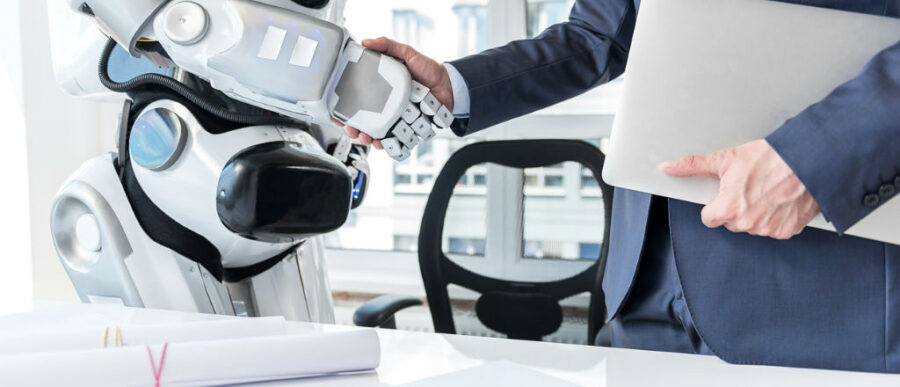Advances in artificial intelligence will lead to the automation of numerous tasks that currently require a human touch. But an increasing number of reports predict that with innovation will come the loss of millions of jobs.
A new paper by Wharton marketing professor Pinar Yildirim focuses on a largely overlooked aspect of this transition – the fate of those who keep their jobs, but will now count robots instead of humans among their co-workers. In “Men and Machine: When Should a Firm Adopt Automation?”, Yildirim and co-author Mustafa Dogan, a postdoctoral researcher at Carnegie Mellon University who earned his Ph.D. at the University of Pennsylvania, show that in some cases, automation can actually lead to increased costs and inefficiencies because of its dysfunctional impact on human teams.
“The attraction of machines and robots is the potential increase in efficiency and the reduction in the cost of getting things done,” Yildirim says. “On the other hand, you have to think about the behavioral reactions of men and women who are now working alongside machines instead of humans.”
Workers who aren’t displaced by automation may react to it with feelings of powerlessness or fear, she notes, or they could become less motivated because they could never perform tasks as flawlessly as a machine. “When a machine is working next to you, the incentive for you to exert effort changes,” she points out.
To better understand the impact of this, the researchers created a model in which a team consists of two employees overseen by a manager. Then they compared a scenario in which a task was completed by two humans and one where the task was carried out by one human and one machine. They find that automation may not be the best approach if it makes the remaining human workers “more expensive,” or that it may require changes in the way human workers are assessed and compensated in order to really create gains.
“When a machine is working next to you, the incentive for you to exert effort changes.”
Automation vs. Team Dynamics
Yildirim notes that in any organization, it’s impossible for managers to equally and accurately gauge the effort of each one of their employees at all times. To compensate for this, many firms will tie an individual’s compensation to the efforts of his or her peers. On the one hand, a business may reward all employees (even the shirkers) if the team collectively meets certain targets. On the other, firms could pit employees against each other and reward only the top performers. Either way, “there’s some incentive to be watching how well and how hard others are working,” Yildirim says.
But what happens when the employee’s “peer” is a robot? Yildirim notes that many of the studies that tout the cost savings that can be achieved by automation ignore the impact on team dynamics. “In all cases, companies take advantage of the fact that they can set contracts for human teams that motivate everyone to work,” she said. “But what if you have a two-person setting with one human who is not being perfectly monitored and a machine set to work well under any circumstances?”
She notes that when there are multiple humans involved, managers may be able to observe patterns that allow them to tell if workers are underperforming due to a lack of effort, or if there is a cause that is beyond their control – for example, retail workers who can’t make their sales goals due to a recession. “Pairing a human with a machine is going to reduce the ability of managers to understand the external pressures that could deter someone’s outcomes,” she says. “And knowing that the monitoring ability of a manager is reduced also increases the incentive the employee has to shirk because he or she knows it will be less likely to be detected.”
“People need to realize that organizations will have to be redesigned around automation.”
If human workers become less efficient as a result of automation and it becomes harder for managers to effectively supervise them, “then the entire system becomes costlier,” Yildirim says. According to Yildirim, this is most likely to happen in organizations or roles where there is a lot of meaningful peer interaction, whereas automation is more likely in organizations with less frequent repeated team work, or team interaction. “If your organization doesn’t have a lot of repeated work in a team, if each job is done in one single setting and it’s very difficult for individuals to track each other’s behavior … those companies won’t benefit much from keeping the humans,” she notes.
For companies that do rely on a lot of team interaction, the research shows that if they can mitigate the human costs by setting up compensation structures that are more competitive rather than cooperative, they can keep human teams even when automation is feasible. “Collaborative contracts can be costlier to maintain when automation is an alternative, because they work well only if individuals value their continued collaboration and commit to work together. When they do not, they tend to shirk and the gains from human teams fall short of the benefits from a machine, Yildirim says.
The research indicates that one of the side effects of increased automation could be that humans end up working in more competitive environments, rather than those that reward employees collectively, Yildirim notes. She adds that some potential future avenues for research include studying how organizational structures would have to change if automation makes it harder for managers to monitor human employees – or the potential impacts of designing machines to perform work functions and to monitor their human “co-workers.”
“Automation and AI are changing us — it’s changing organizations,” she says. “People need to realize that organizations will have to be redesigned around automation. We have to think about what’s happening to the individuals who keep their jobs – their lives are changing, too. Nobody is talking about that.”


